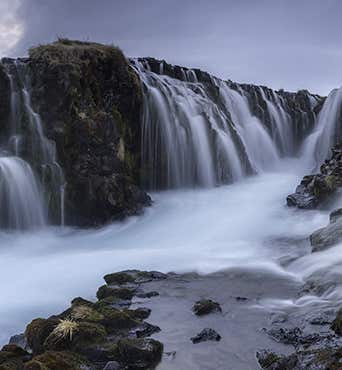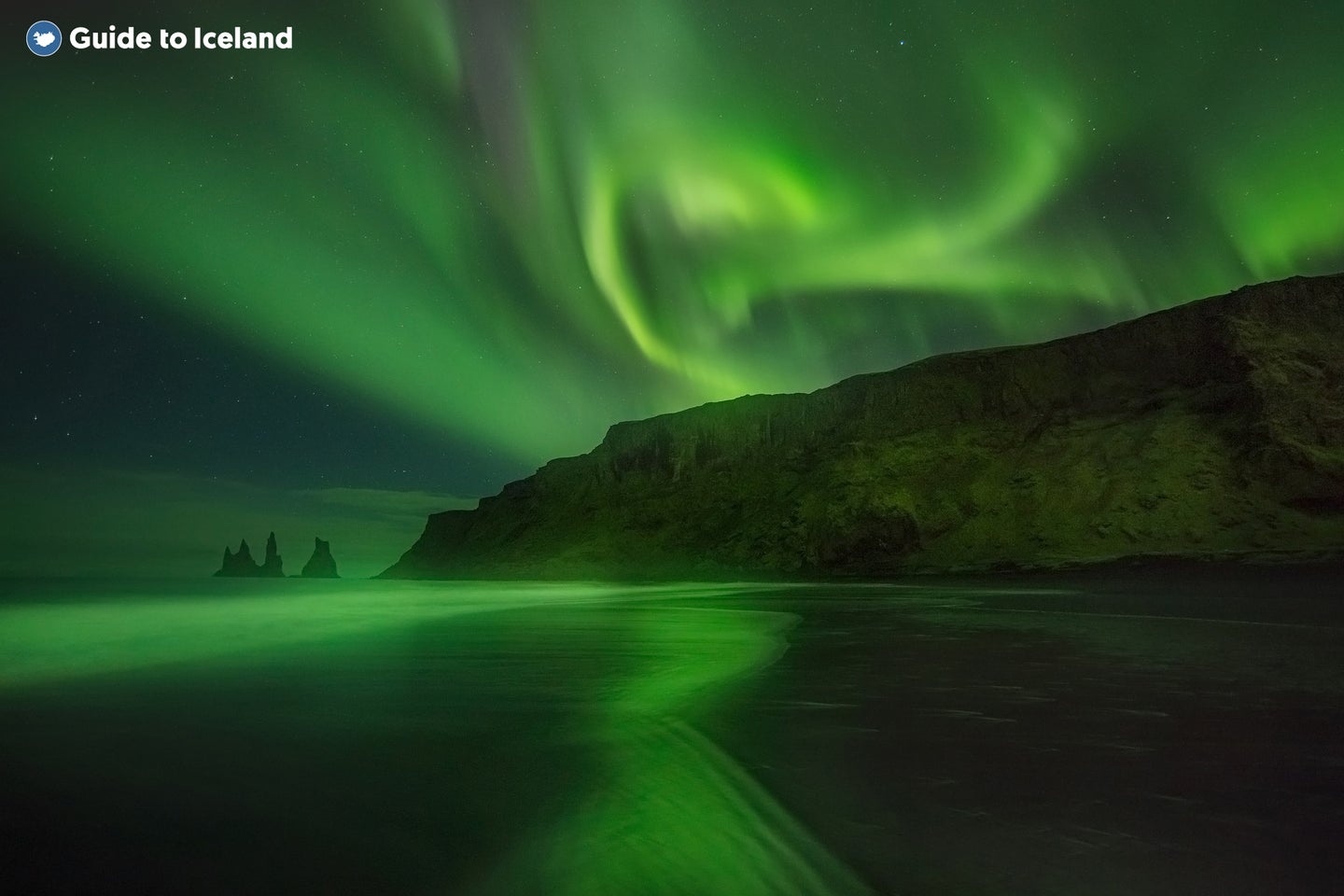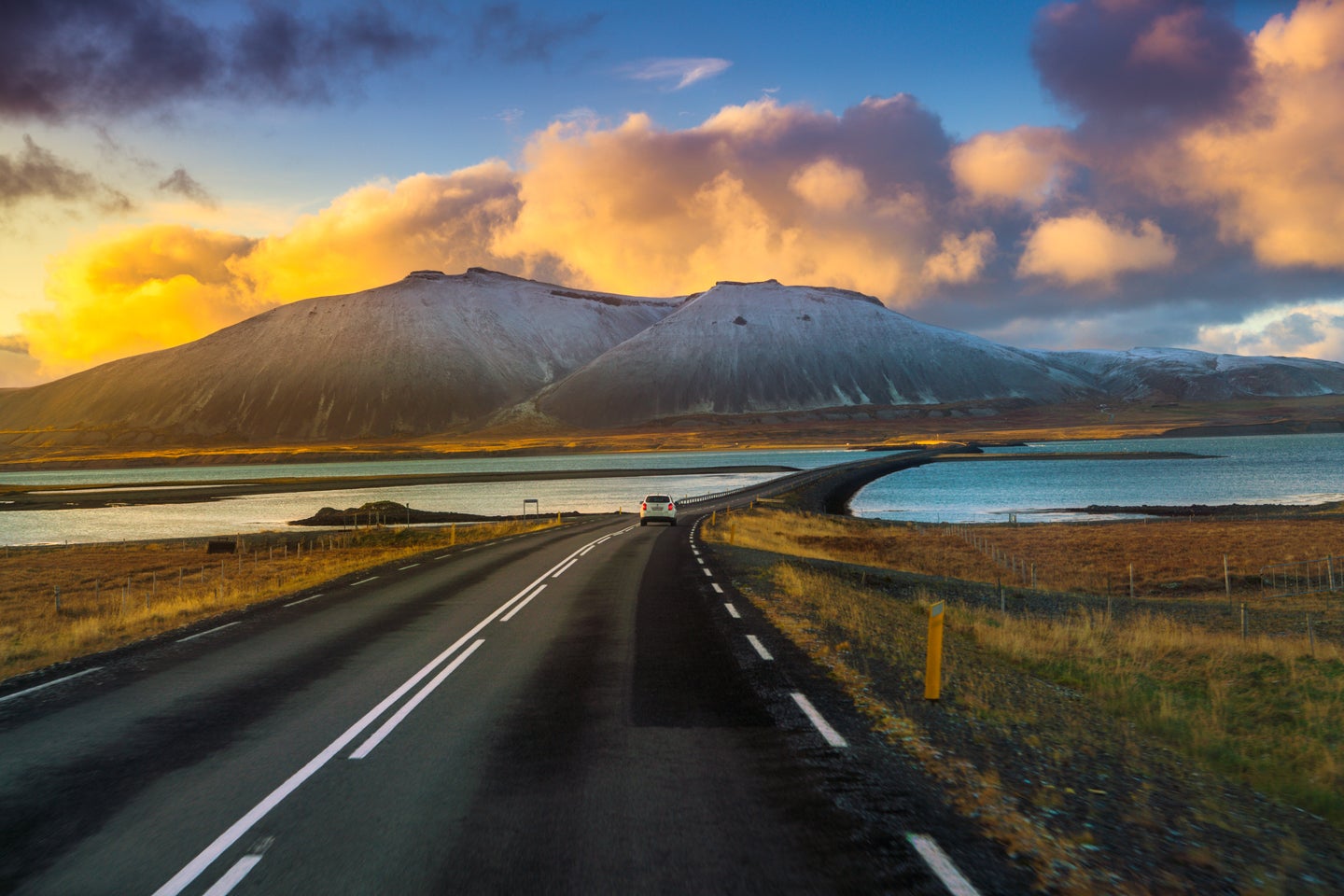
Best Waterfall Tours in Iceland — Largest Selection & Cheapest Prices Guaranteed
Select starting location
Select dates
Add travelers
Waterfall Tours
Refine the results by using the filters
Explore an unequalled wealth of tours and packages
Verified customer reviews
Read first-hand reviews by customers from across the world
All You Need To Know About Waterfall Tours in Iceland
Iceland’s waterfalls are some of the country’s top attractions, offering visitors the chance to experience stunning natural beauty. From famous waterfalls like Skogafoss and Gullfoss to hidden gems like Hengifoss and Glymur, there’s something for everyone. Waterfall tours are an easy way to explore these sites, with options ranging from day trips to multi-day adventures.
Waterfall tours offer journeys that include multiple locations, some of which include activities like glacier hiking or ice cave exploration. Whether you prefer a minibus tour or a self-drive trip, these tours make it easy to visit the best waterfalls while learning about their history and significance. It’s a convenient way to experience Iceland’s natural beauty without missing out on its hidden treasures.
Best Waterfall Day Tours in Iceland
As waterfalls are some of the most beautiful attractions in Iceland, there are many exciting waterfall day tours to choose from. These are the best options for your adventure in Iceland.
- The Golden Circle Minibus Tour: This iconic day tour takes you to three of Iceland’s most famous attractions: Thingvellir National Park, the Geysir geothermal area, and the world-renowned Gullfoss waterfall. It’s a convenient and scenic way to experience the highlights of the Golden Circle.
- The South Coast of Iceland Tour from Reykjavik: Explore the stunning waterfalls of the South Coast, including the Seljalandsfoss and Skogafoss waterfalls, and other incredible natural attractions such as black sand beaches and glaciers. This highly rated full-day tour offers a great introduction to Iceland’s diverse landscapes.
-
The Glacier Lagoon & South Coast Day Tour: A full-day guided tour from Reykjavik that covers the most iconic sights of the South Coast, including Seljalandsfoss and Skogafoss waterfalls. The tour also includes a visit to the breathtaking Jokulsarlon glacier lagoon.
Best Waterfall Multi-Day Tours in Iceland
For a more immersive experience, these multi-day tours allow you to explore Iceland’s waterfalls in greater depth with an expert guide, pre-arranged transport, accommodation, and itinerary.
- 3-Day Northern Lights & Ice Cave Tour: Make the most of three days in Iceland by joining a guided multi-day tour. It includes the Golden Circle, South Coast, and the iconic Jokulsarlon glacier lagoon, where you'll go on an exciting ice-caving adventure. This experience includes 2 nights in a comfortable hotel.
- 2-Day Ice Cave & South Coast Trip to Jokulsarlon Glacier Lagoon: This two-day guided tour combines the beauty of Iceland’s waterfalls with the thrill of visiting an ice cave. Highlights include the Seljalandsfoss and Skogafoss waterfalls, Jokulsarlon glacier lagoon, and a guided adventure into a stunning ice cave.
- 7-Day Guided Minibus Tour of the Complete Ring Road of Iceland: This comprehensive 7-day tour covers the entire Ring Road of Iceland, showcasing the country’s most iconic waterfalls, including the Gullfoss, Seljalandsfoss, and Skogafoss waterfalls. Along the way, you’ll also experience other natural wonders, such as glaciers, volcanoes, and hot springs.
Best Waterfall Self-Drive Trips in Iceland
For those who prefer the freedom of a self-guided adventure, these self-drive trips offer the flexibility to explore Iceland’s waterfalls and stunning landscapes at your own pace.
-
10-Day Self-Drive Tour of the Complete Ring Road of Iceland with Top Attractions & Snaefellsnes: Explore the best of Iceland on a 10-day road trip, visiting iconic waterfalls such as Gullfoss, Skogafoss, and Dettifoss, along with other must-see destinations like Snaefellsnes peninsula and Vatnajokull National Park.
-
7-Day Northern Lights Self-Drive Tour: Spend a week in Iceland traveling to the best attractions of the Snaefellsnes peninsula, the Golden Circle, and the South Coast.
- Two-week Northern Lights Road Trip: This self-drive adventure includes a rental car and accommodations, offering the ultimate Icelandic road trip. You’ll visit the country’s most stunning waterfalls, including Gullfoss, Skogafoss, and Dettifoss while chasing the northern lights and exploring Iceland’s diverse landscapes.
Best Waterfall Vacation Packages in Iceland
These best-rated packages are perfect for those seeking a complete vacation experience with the option to add exciting activities.
- Five-Day Northern Lights Winter Vacation Package: Make the most of five days in Iceland by exploring the incredible landmarks of the South Coast and adding incredible optional activities that fit your interests.
-
6-Day Northern Lights Adventure Package: Explore the wonders of Iceland during winter and hunt the northern lights with this 6-day travel package, which includes incredible waterfalls such as Gullfoss, Seljalandsfoss, and Skogafoss, among others.
-
One-Week Winter Package in Reykjavik & the Circle of Iceland: This one-week package offers the best of both worlds: time to explore Reykjavik and its surroundings, then embark on a scenic journey around the whole Ring Road. It includes the Golden Circle and the South Coast, with visits to top waterfalls like Gullfoss, Seljalandsfoss, and Skogafoss.
Top Waterfalls in Iceland
Iceland is home to a countless number of waterfalls, and they're some of the most popular attractions for visitors. These are the top waterfalls that you shouldn't miss out on seeing during a visit.
-
Gullfoss: Located on the Golden Circle, Gullfoss is a two-tiered waterfall plunging into a rugged canyon. It’s accessible year-round and once faced hydroelectric development before local activism saved it. The "Golden Falls" is a must-see for all visitors.
-
Seljalandsfoss: A South Coast icon along the Ring Road, Seljalandsfoss lets you walk behind its cascade for a unique perspective. Nearby, the hidden Gljufrabui waterfall adds to the allure of this picturesque spot.
- Gljufrabui: Known as the "hidden waterfall," Gljufrabui is tucked inside a narrow canyon near Seljalandsfoss. Its serene atmosphere makes it a magical experience for those willing to step into the shallow stream.
-
Skogafoss: One of Iceland’s largest waterfalls, Skogafoss drops 197 feet (60 meters) and offers panoramic views from a nearby staircase. Legend says a Viking treasure chest is hidden behind its powerful cascade.
-
Dettifoss: Known as one of Europe’s most powerful waterfalls, Dettifoss thunders into a vast canyon in Vatnajokull National Park. Its dramatic power has even been featured in the film Prometheus.
-
Godafoss: The "Waterfall of the Gods," Godafoss, is a horseshoe-shaped beauty in North Iceland near Lake Myvatn. It’s tied to history, as pagan idols were thrown into its waters during Iceland’s Christian conversion.
-
Dynjandi: Often called "the jewel of the Westfjords," Dynjandi is a fan-shaped series of waterfalls reached via a short hike. Its remote location and stunning beauty make it unforgettable.
-
Hraunfossar and Barnafoss: Hraunfossar features streams flowing out of a lava field, while Barnafoss is a turbulent cascade nearby, steeped in folklore.
-
Kvernufoss: Tucked away near Skogafoss, Kvernufoss is a quieter gem accessed by a short hike. Visitors can also walk behind its cascade, making it a peaceful alternative to more crowded spots.
-
Svartifoss: Found in the Skaftafell Nature Reserve, Svartifoss is famous for its black basalt columns, which inspired Reykjavik’s Hallgrimskirkja church. A short hike through scenic landscapes leads to this striking waterfall.
Tips for Visiting Waterfalls in Iceland
Visiting waterfalls in Iceland can be an awe-inspiring experience, but it’s important to come prepared. First and foremost, dress appropriately for the weather. Waterproof layers and sturdy shoes are essential, as the paths around waterfalls can be wet and slippery, especially during rainy or snowy conditions. In winter, crampons are a good idea to provide extra grip on icy surfaces and ensure you stay steady on your feet.
When it comes to photography, be ready for mist and spray from the waterfalls, which is a natural part of their beauty. To protect your camera equipment, consider using a camera with lens protection or a waterproof case, which will help shield it from the water and keep it safe.
Many waterfalls are located near other attractions, making it easy to combine your visit with more of Iceland’s wonders. For example, the Seljalandsfoss and Skogafoss waterfalls are just a short drive from Reynisfjara black sand beach and Solheimajokull glacier, a popular spot for glacier hiking tours.
Gullfoss waterfall is part of the Golden Circle, which also includes the famous Geysir geothermal area and Thingvellir National Park. If you're exploring the Westfjords, don’t miss the magnificent Dynjandi waterfall, and take the time to enjoy the remote hot springs and charming coastal villages in the area.
Whether you’re drawn to their beauty, inspired by their legends, or looking for an unforgettable photo opportunity, Iceland’s waterfalls are essential to any trip. Plan your journey, explore these iconic sites, and experience the magic of Iceland’s countless waterfalls.
Frequently asked questions
What are the best waterfall tours in Iceland?
1. The Golden Circle Tour from Reykjavik: This classic route features Gullfoss, one of Iceland's most renowned waterfalls. Along with this, you’ll also visit Thingvellir National Park, the Oxararfoss waterfall and the Geysir geothermal area, offering a well-rounded experience of Iceland’s natural wonders.
2. The South Coast of Iceland Tour from Reykjavik: This tour focuses on the stunning waterfalls of the South Coast. You'll explore Seljalandsfoss, where you can walk behind the falls, and Skogafoss, a powerful waterfall with a striking drop. It’s a must-do for anyone wanting to see some of Iceland's most famous waterfalls.
3. The Glacier Lagoon & South Coast Day Tour from Reykjavik: For those wanting to combine waterfall sightseeing with glacier exploration, this tour visits the impressive Seljalandsfoss and Skogafoss, along with the breathtaking Jokulsarlon glacier lagoon, where you can see floating icebergs. It’s a full-day adventure for those looking to experience Iceland’s glaciers and waterfalls in one go.
What are the cheapest waterfall tours in Iceland?
1. Scenic 8-Hour West Iceland Sightseeing & Culture Tour in a Small Group with Transfer from Reykjavik: This affordable tour combines stunning natural landscapes with a touch of Icelandic culture. You’ll visit waterfalls like Hraunfossar and Barnafoss, both known for their unique beauty while enjoying a small-group experience. Transfers from Reykjavik make it convenient for travelers without a car.
2. Stunning 8-Hour Golden Circle Tour with Transfers from Reykjavik: A classic tour that takes you to Gullfoss, one of Iceland's most famous waterfalls, as well as other iconic sights like Geysir and Thingvellir National Park. It's a fantastic way to see a variety of attractions at an affordable price, with transportation included.
3. Small Group 8-Hour Guided Tour of the Golden Circle with Kerid Crater from Reykjavik: This tour also features the Golden Circle highlights, including Gullfoss, but adds a visit to Kerid Crater, a stunning volcanic crater lake. The small group size ensures a more personal experience, and the pricing makes it a budget-friendly option.
What are the best waterfalls in Iceland to see on a tour?
1. Gullfoss: One of the most famous waterfalls in Iceland, located in the Golden Circle.
2. Seljalandsfoss: A unique waterfall that allows you to walk behind the cascade.
3. Skogafoss: A powerful, 200 feet high (60 meters) waterfall on the south coast.
4. Dettifoss: Europe's second most powerful waterfall, located in Vatnajokull National Park.
5. Godafoss: Also known as the "Waterfall of the Gods," this stunning cascade is steeped in history.
What are the best waterfalls near Reykjavik?
1. Oxararfoss: Located in Thingvellir National Park, about 40 minutes from Reykjavik, this small but picturesque waterfall is part of the Golden Circle route. It's an easy stop if you're planning a day trip to this UNESCO World Heritage Site.
2. Helgufoss: Just a 30-minute drive from Reykjavik, this lesser-known waterfall is nestled in the Mosfellsdalur valley. It's a peaceful spot for a short hike and a great option for avoiding crowds.
3. Glymur: About an hour's drive from Reykjavik, Glymur is hidden away in the Hvalfjordur fjord. Reaching it requires a moderately challenging hike, but the views of the cascading water and surrounding canyon are worth the effort.
What are the best waterfalls to visit in North Iceland?
1. Dettifoss: Known as Europe’s most powerful waterfall, Dettifoss is an integral part of Diamond Circle tours, and don't miss out on a visit to the Selfoss waterfall just next to it. This 10-hour tour from Akureyri is an excellent way to visit.
2. Godafoss: Also known as the "Waterfall of the Gods," this stunning cascade is easily accessible near the Ring Road. You can also visit with tours from Akureyri, like this sightseeing and hot springs tour.
3. Aldeyjarfoss: Famous for its unique basalt columns, this hidden gem is perfect for adventurous travelers. You can visit with a private off-road tour or drive there with a 4x4 rental car in summer.
What are the best waterfalls to visit in East Iceland?
1. Hengifoss: One of the tallest waterfalls in Iceland, known for its dramatic red clay layers in the cliff face. It's one of the most rewarding hikes in the region, featuring other waterfalls like Litlanesfoss, and it's a 30-minute drive from the town of Egilsstadir.
2. Rjukandi: This waterfall is right next to the Ring Road, between Akureyri and Egilsstadir, and is a stunning sight.
3. Fardagafoss: A beautiful waterfall along the road to the town of Seydisfjordur, known for its picturesque surroundings. You can reach it with a short and easy hike.
What are the best waterfalls to visit in Westfjords?
1. Dynjandi: Known as the "Jewel of the Westfjords," Dynjandi is a breathtaking cascade that covers a whole mountainside, with a series of smaller waterfalls below it. You can visit with this 3.5-hour tour from Isafjordur, the largest town in the region, or on a self-drive tour.
2. Valagil: Located in a rugged canyon near the town of Sudavik, this beautiful waterfall is accessed by a short hike and offers a peaceful setting for nature lovers.
3. Foss in Fossfjordur: A hidden gem in the Fossfjordur valley, right by the main road. It flows over a rocky hillside and into a deep blue pond.
Are waterfall tours in Iceland available year-round?
What is the best time to see Iceland’s waterfalls?
What should I wear for a waterfall tour in Iceland?
Also, make sure to bring a camera with a lens protector for misty conditions and a refillable water bottle.
What is Iceland’s tallest waterfall?
Since 2007, however, a new waterfall, Morsarfoss, has become visible after Morsarjokull glacier started melting. This new waterfall measures at least 787 feet (240 meters) in height, making it the current tallest in Iceland.
What is Iceland’s most powerful waterfall?
Are there any waterfalls in Iceland that have caves behind them?
What makes Iceland’s waterfalls unique?
Why are there so many waterfalls in Iceland?
Where does the water of Iceland’s waterfalls come from?
Why do waterfalls in Iceland often have rainbows in front of them?
Two waterfalls in Iceland that are known to display rainbows often are Gullfoss, on the Golden Circle sightseeing route, and Skogafoss, on the South Coast.
What happens to Iceland waterfalls in winter?
Are waterfalls part of the Golden Circle?
How do I see waterfalls in Iceland without a car?
Are there restaurants or accommodations near waterfalls in Iceland?
Can you go rafting or kayaking down any waterfalls in Iceland?
Can I swim in Icelandic waterfalls?
Are there family-friendly activities near waterfalls?
Are waterfall tours suitable for all travelers, including families and people with mobility issues?
Are there any lesser-known waterfalls worth visiting?
What are some safety tips for visiting waterfalls in Iceland?
Can I take photos of waterfalls during tours?

Download Iceland’s biggest travel marketplace to your phone to manage your entire trip in one place
Scan this QR code with your phone camera and press the link that appears to add Iceland’s biggest travel marketplace into your pocket. Enter your phone number or email address to receive an SMS or email with the download link.


















